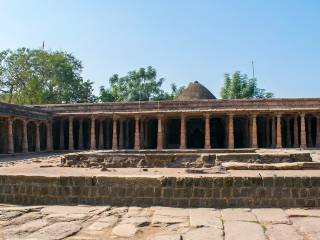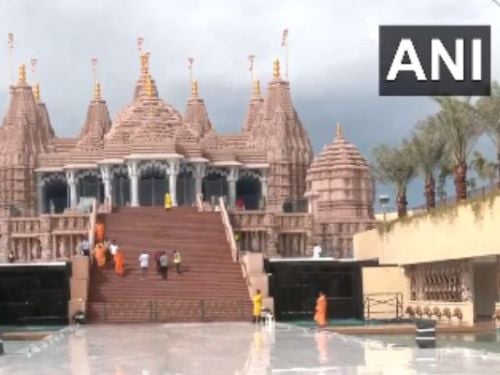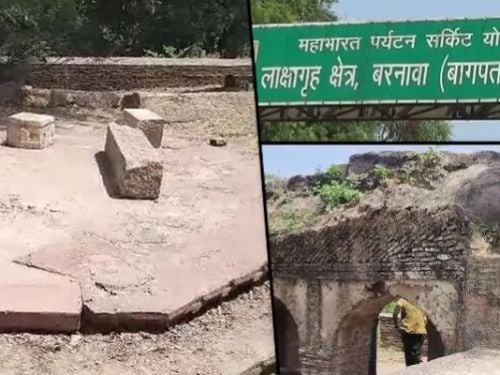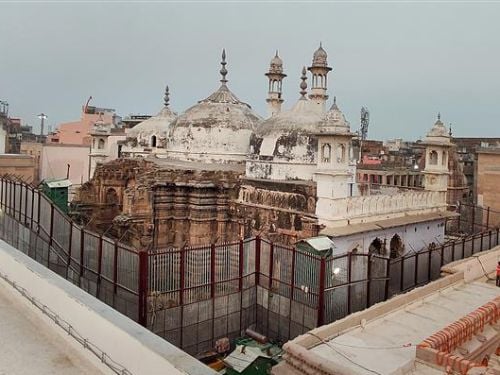During one of my recent summer trips to India, an incident in the Mewat region of Haryana reported in a local newspaper caught my attention. A road accident had escalated into a communal riot between Muslims and Hindus. Media reports quoted local observers, including police officials, who expressed surprise at the amount of firing that had emanated from a specific Muslim neighborhood and the quantity of weapons and arsenal that had been stockpiled in the households. What was disturbing to me, from a very neutral sociological standpoint, was that a road accident had degenerated into a communal riot and had created so much social chaos.
Among other things, this incident was, for me, symptomatic of a lack of what may be called “communal integration” in Indian society. In a diverse society like India, where the national motto itself is Unity in Diversity, the lack of integration in terms of an inter-religious social cohesion is fraught with great risk.
Loss of empathy stemming from a lack of proper socialization of individuals in free societies always risks engendering group violence –the worst kind of chaos, as we have been witnessing only too often. When we use the word chaos we are not just using a Greek word, we are decontextualizing a term that had deeper cosmogonic and ontological associations for the ancient Greeks. As Suzanne Strauss Art explains, “In ancient Greece, cosmos meant order and harmony, the opposite of chaos. Today, cosmos refers to the universe (which the Greeks considered to be orderly), and cosmopolitan means ‘citizen of the world’ (someone not restricted by local prejudices).”
While ancient Greeks defined chaos through its opposite, its binary counterpart cosmos, a new societal cosmopolitanism seems to be the need of the hour today. If India wants to foster harmony and the kind of social discipline and public order that it deserves,the question of authentic inter-religious integration especially will have to be addressed.
Recognizing Ideology as the Source of the Divide
The trauma of the Islamic invasions, the destruction of thousands of Hindu, Jain and Buddhist places of worship all across the Subcontinent, and the ethnic cleansing of Hindus and Sikhs from Muslim majority regions during and after partition all have much less to do with the Hindu-Muslim divide in India’s body politic today than the ideological gulf separating political Islam from cultural Hinduism.
Historically, certain fundamental ideological differences have compounded the relationship of Islam, an Abrahamic religion, with the native dharma based indigenous religions of India. One core difference between Islam and the native religions of the east is that the latter are more individualistic in their social mechanics in that they place primary emphasis on the personal aspect of an inner, individual self-actualization.
Self-discovery and liberty to choose from a diversity of paths for the existential unfoldment of one’s layered being to its full potential vis à vis a universal transcendent divine are central to their philosophies, while Middle Eastern faiths traditionally have not been configured to brook or even recognize this concept of the validity of a diversity of pathways to a universal transcendent divine.
The dharmic systems are thus first and foremost malleable philosophical streams more than anything else,while the Middle Eastern religions, as organized monoliths, have historically functioned to emphasize unquestioning faith, belief in a one and only “correct” book, proselytization, conversion, and the “saving” of the other’s soul, often with no qualms about projecting their respective satans onto the gods of others.
The latter have thus historically emphasized control of behaviours, through centralized external power structures as well as internalized fears of sin and inducements of their respective non-negotiable conceptions of “heaven”and “truth.”
Efforts to resolve the Hindu Muslim divide will not be fruitful without taking cognizance of its genesis in ideology and without duly recognizing the space/spaces of “tolerance” conceded by each thought system.
Within the context of their ideological différence, one cultural practice that has historically caused friction between Islam and the native eastern religions such as Hinduism, Sikhism, Buddhism, and Jainism is the annual ritual mass slaughter of animals for the Id ul Zuha festival.

This is the biggest Eid or celebration of the Muslim calendar. It is also known as Eid ulAzha, Eid al Azha, Id ulAdha, QurbaniEid, Eid al Kabir, Bakr Eid or Bakri Eid.
It was observed on September 25 in South Asia this year.
Islam enjoins upon its adherents the obligation to sacrifice animals by slaughtering them in the prescribed halal manner.
Media reports on the internet indicate the scale of the slaughter and the zeal with which this religious duty is carried out by the faithful across the world. Hundreds of millions of animals are ritually killed. More than 1.2 million cattle are sacrificed in Dhaka city alone on Eid day. In Karachi, the number is estimated at 1.5 million.
Decoding the Politics of Beef
Traditionally, in South Asia, goats and sheep have been popular as the sacrificial animals of choice. For this reason this Id is commonly known as BakraId in India. In India especially, goats and sheep have been the most common animals for this purpose.
Several reasons probably contributed to this. This may not just have been due to the ban on cow slaughter imposed by the Mughal Emperor Akbar or because goats cost less than cows. The word bakra in Hindi and Urdu means goat.
In Arabic however, which is the source language of Islamic teachings and the language of the Koran, the word baqra/baqarah signifies cow, not goat.
This linguistic ambivalence stemming from bakra/baqra
in the context of BakraId may possibly be the reason why most Muslims in India have historically celebrated the festival of “cow”sacrifice by slaughtering goats.
Interestingly, in the original Biblical story of Abraham/Ibrahim however,which the Muslim sacrifice festival of Id ulAzha celebrates/replicates, the animal sacrificed by Abraham as a substitute for his son at the last minute was neither a cow nor a goat but a ram.
In fact, the Koran itself mentions nowhere that Muslims must eat beef (“The eating of the flesh of duly slaughtered cows is a permission in Shariah, not a Command”).
However, in recent times, in Muslim communities all across South Asia, as many Muslims reorient themselves culturally through a more Arabized identity – the spread of hijabs and abayas being just one example of this reorientation – the sacrifice of bigger animals such as cows, buffaloes and camels has gained greater currency and desirability, partly due to the prestige attached to the cultural practices of the rich Arab countries but also in part, in all fairness, due to greater material prosperity in South Asia itself.
In the Indian context, this is a very tricky proposition, for if Islam enjoins the slaughter of animals, and if Arabization renders the cow the de rigueur sacrificial animal, the dharma based religions of the East (Hinduism, Sikhism, Buddhism and Jainism) ideologically hold all life sacred and recognize the emotional intelligence of animals.
Hinduism, Jainism and Sikhism in particular see the cow as among the most sacred or venerable forms of life as symbols of unconditional giving and of motherhood and consequently value its protection.The current controversies and clamour regarding cow slaughter rights and cow slaughter bans are thus a symptom of a growing schism.
Today, even if more people in India have “turned non-veg” and eat more meat including beef pursuant to the so called “pink revolution” foisted upon the country by the previous UPA government, the ritual mass sacrifice of bigger animals in already dense public spaces like neighborhood colonies and streets or closed spaces like mosques or Muslim community centers is unlikely to sit well with the rest of the population that is, in its paradoxical modernity, increasingly getting interested in animal rights even as it embraces personal “freedom of diet” as a sacrosanct personal freedom just like it espouses personal freedom of speech as an inviolable personal right.
This may be seen as yet another paradox of modern India. Western style animal rights awareness and movements have grown despite the seemingly declining numbers of vegetarians in the middle class population. Compasssion and concern for animals are now increasingly center stage even in the meat eating milieu.
If these trends continue to amplify in India, it will have two implications.
First, it will signify greater Arabization (and possibly radicalization) amongst the Muslims of India and second, the secularists’ crafty (mis)appropriation of beef as a favored cause to flagellate Modi with notwithstanding, it will ultimately accentuate the divide between people following Islam and people following the Eastern religions.
Three Models of Integration
Most Indians believe that India’s efforts after partition to integrate Muslims have always hinged on policies excessively and unduly unfair to Hindus by extracting from India’s Hindu majority extraordinary concessions and accommodation which would be absolutely unacceptable in any other part of the world.
These efforts have always pivoted on the construct of the Muslim as a special citizen.This can been seen in every policy matter ranging from the double standards propping the unconscionably discriminatory Article 370 in Kashmir to the government funding of madrassas and the stipends given to imams and mullahs (as opposed to government appropriation of temple revenues and control of Hindu shrines), from the Muslim Personal Law which enables Muslim men the right to practice polygamy (and deprives Muslim women of basic universal human rights revolving around inheritance and alimony) to the former Prime Minister Manmohan Singh’s assertion that Muslims have the first rights to all of India’s resources, and to everything else in between.
The absence of any effort to bring down the explosive Muslim population growth rate to bring it on par with the growth rate of rest of the population and the abatement of large scale illegal Muslim immigration from neighbouring Bangladesh for vote bank politics are yet other manifestations of fake and counter-productive attempts at Muslim integration which have not helped India or its social fabric at all.
Nehruvian Secularism, which basically exploited Muslim identity and perpetuated a dangerous mythology of Muslim exceptionalism for political gain, has failed miserably in bringing about positive inter-religious unity.
China, on the other hand, presents an altogether different model of Muslim integration.
In 2014, China banned Muslim state employees in Xinjiang from fasting during the Islamic fasting month of Ramzan/Ramadan, ostensibly to enable state workers to discharge their duties effectively and professionally.
This workplace related rule is however inscribed within the framework of China’s some-carrot-and-mostly-stick approach to quell Uighur/Muslim separatism.
The banning of Islamic garments in public transport in the province is another manifestation of this approach to integration.
Swift execution of Uighur perpetrators of street violence and terrorist attacks is yet one more component of China’s toolkit of measures to integrate its Uighur Muslim population.

Curiously, the widely reported news concerning the ban on Ramadan fasting did not elicit much reaction or criticism from the “secular” brigade in India or even from the so-called Muslim countries for that matter.
However, had something similar even been proposed in India or a Western country, one can be sure reactions would have been tempestuous. The fact of the matter is that few societies can afford to foster integration à la Chine, i.e. through brute force.
Enforcement of Uniform Civil Code

Having separate legal codes and separate personal laws for people of different religions and communities is an outrageous anachronism which has only served to keep India backward and divided.
It is time for India to scrap the Muslim Personal Law and bring both its Muslim and its non-Muslim population within the ambit of a common set of civil laws. This structural change will be especially empowering for Muslim women who make up 7 percent of India’s population.
A Uniform Civil Code will serve the cause of a new Indian cosmopolitanism in very positive ways.
Source : India Facts

 Madhya Pradesh: ASI survey of Bhojshala complex in Dhar to start on March 22
Madhya Pradesh: ASI survey of Bhojshala complex in Dhar to start on March 22 PM Modi to inaugurate the first traditional Hindu Mandir in Abu Dhabi
PM Modi to inaugurate the first traditional Hindu Mandir in Abu Dhabi Tirupati Devasthanams to establish platform for non-Hindus to adopt Sanatan Dharma
Tirupati Devasthanams to establish platform for non-Hindus to adopt Sanatan Dharma Baghpat court gives ownership rights of Mahabharata era Lakshagriha to Hindu side
Baghpat court gives ownership rights of Mahabharata era Lakshagriha to Hindu side Misleading claims about Brahmins removed in rationalised NCERT textbooks
Misleading claims about Brahmins removed in rationalised NCERT textbooks Big victory to Hindus as court allows puja in Vyas Ji Ka Tehkhana at Gyanvapi complex
Big victory to Hindus as court allows puja in Vyas Ji Ka Tehkhana at Gyanvapi complex